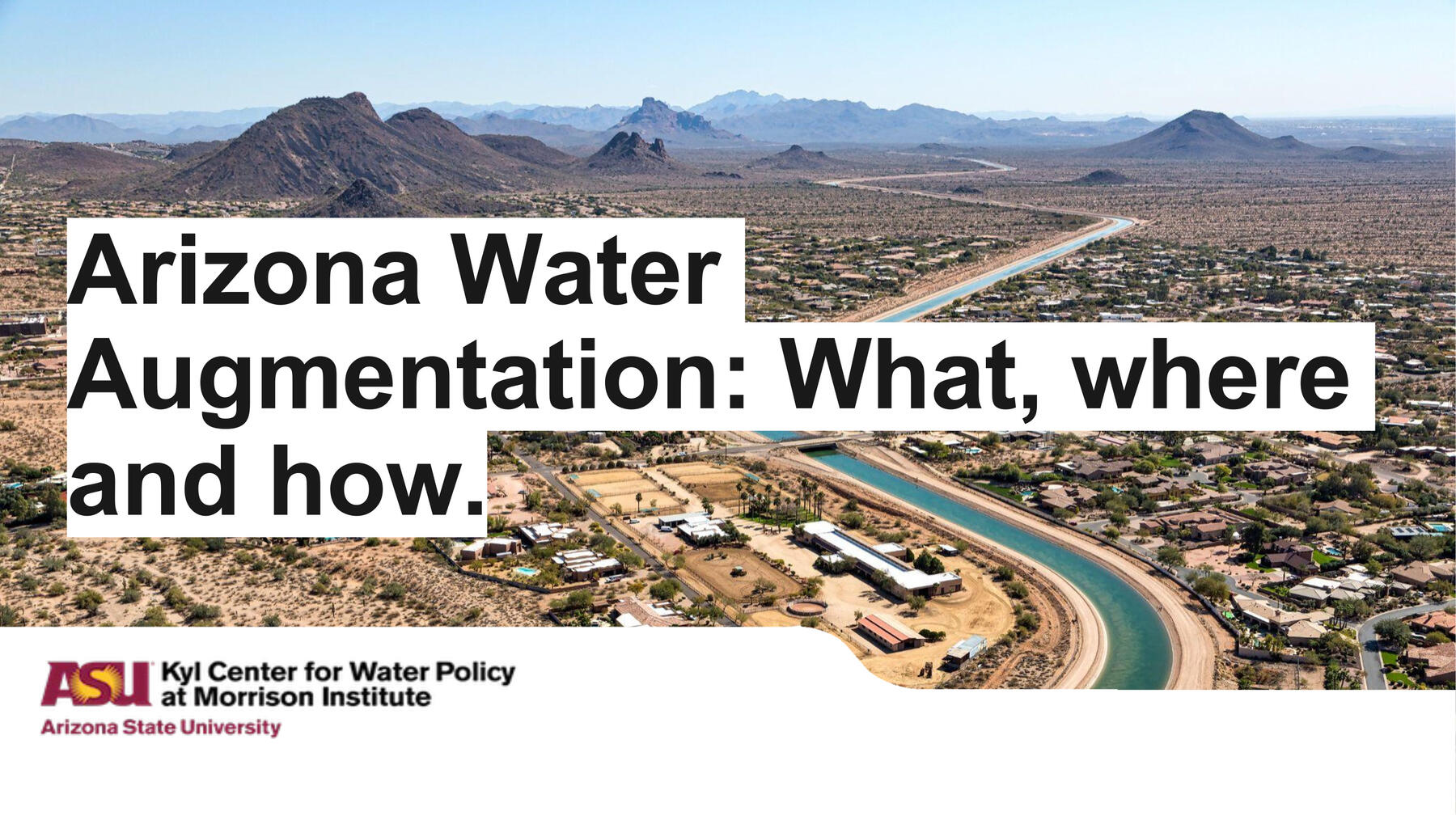
Arizona Water Augmentation - Part 4: Where will we get the water?
Part 4: Where will we get the water?
When it comes to conceptualizing new water supplies for Arizona, there’s no lack of imagination -- and seemingly no lack of ingenuity: Engineers and futurists have proffered everything from ocean desalination to hauling icebergs to pipelines from the Mississippi River (or the Missouri River or Washington or Alaska or Canada . . . ) as the next big supply of water.
In its 2019 final report, the Long-Term Water Augmentation Committee of the Governor’s Augmentation, Innovation and Conservation Council focused on three water augmentation opportunities:
- ocean desalination, in partnership with the Republic of Mexico,
- brackish groundwater desalination – that is, underground water so high in “salts” (sodium, calcium, magnesium, potassium, chlorides, sulfates and bicarbonates) that it would have to be treated in order to be put to use, and
- groundwater transportation from Arizona’s Harquahala and Butler Valley Groundwater Basins.
The Committee discarded several concepts as “not practical, not legally possible, or financially infeasible.” In a future installment, we will discuss some of these concepts in greater depth.
|
Large Water Augmentation Source |
Reason for Elimination |
|
Snake River or other river in the Columbia River Basin |
|
|
Bear River in Utah |
|
|
Rio Grande River |
|
|
Snowpack on the Colorado Front Range |
|
|
Reclaimed water from Pacific coast cities in Oregon and Washington, delivered to Nevada and then to Arizona via exchange |
|
|
Floodwaters from the Missouri River |
|
The Augmentation Concepts page on the Kyl Center's Arizona Water Blueprint details 17 Arizona water augmentation proposals. Several of these have received increased attention in recent years and are in some stage of development:
- A binational work group of representatives of Mexico and the United States has scoped a proposal to build twin plants to desalinate ocean water from the Sea of Cortez. The desalinated water would be conveyed 300 miles north to Morelos Dam to be delivered in Mexico, and water users in the United States who helped to pay for the plants’ construction and operation would receive an exchange of some of Mexico’s Colorado River water.
- There is renewed interest in transporting groundwater from the Harquahala Basin, west of Phoenix. The Harquahala is one of three Arizona groundwater basins from which groundwater may be exported into the Phoenix-Tucson urban corridor. The Central Arizona Project (CAP) canal runs through the basin and could be used to transport Harquahala groundwater to Maricopa, Pinal and Pima Counties. However, because the water contains contaminants, it would require treatment before it could be added to the CAP. Alternatively, the water could be conveyed via a pipeline and treated closer to the delivery point.
- SRP is working with municipal water providers and other parties on a concept to enlarge Bartlett Dam on the Verde River. The modification could result in a substantial increase in water yield from the river.
- Arizona along with Southern Nevada is helping to fund the environmental planning for a Southern California project that would treat effluent for local reuse that would otherwise be discharged into the ocean. If the project is eventually realized, Arizona water users could receive Colorado River water in exchange for their investment in a reclaimed water supply used in Southern California.
- With approval from the US Army Corps of Engineers, SRP is piloting a project to use advanced modeling and real-time forecasting to extend the time SRP is permitted to hold water in a part of Roosevelt Dam’s Flood Control Space. Allowing SRP to store the water for a longer period (120 days instead of 20 days) will reduce the release of flood waters down the Salt River channel and instead enable SRP to deliver the water directly to users or for aquifer recharge. The plan has been determined to have no impact on the safety of the dam or communities downstream.
- The Colorado River Indian Tribes (CRIT), whose reservation is on the Colorado mainstem in western Arizona, has entered into an agreement with the federal government and the state enabling CRIT to lease its Colorado River water to off-reservation parties in Arizona. Leased CRIT water could be moved through the CAP canal to water users in Central Arizona.
Any but the last two concepts would require infrastructure investments. As explained in our previous blog, a key to developing any augmentation project is to assure investors or lenders that there will be enough future water demand to pay for the project.
For more details about these and other water supply proposals, visit the Water Augmentation Concepts page on the Kyl Center’s award-winning Arizona Water Blueprint.
This blog series is co-sponsored by the Arizona Water Innovation Initiative, a multi-year partnership with the state led by Arizona State University’s Julie Ann Wrigley Global Futures Laboratory in collaboration with the Ira A. Fulton Schools of Engineering.